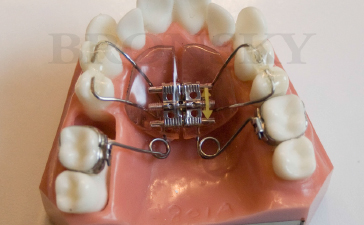One of the main advantages of upper appliance braces is that they can be used in younger patients, often before the permanent teeth have fully erupted. This early intervention can help prevent more serious orthodontic issues from developing later on. Additionally, upper appliance braces are removable, which means they can be taken out for eating, brushing, and flossing. This makes them a convenient option for maintaining good oral hygiene during the treatment process.
During the initial consultation, an orthodontist will assess your specific dental needs and determine if upper appliance braces are the right choice for you. If so, they will create a customized treatment plan tailored to your individual situation. The braces will then be fitted and adjusted as needed to gradually widen the upper jaw over time. Regular check-ups will be scheduled to monitor the progress and make any necessary adjustments.
These braces consist of a metal framework that is custom-made to fit the roof of the mouth. The framework is attached to the teeth using bands or brackets and can be adjusted by a dentist or orthodontist.
The purpose of upper appliance braces is to create more space in the upper jaw, allowing the teeth to align properly. By widening the upper jaw, these braces can correct issues such as crowding, crossbites, and narrow arches.
Overall, upper appliance braces can be an effective solution for individuals with a narrow upper jaw or crossbite. They can help create more space in the mouth and improve the alignment of the teeth. If you or your child has orthodontic issues related to the upper jaw, it is worth considering upper appliance braces as a potential treatment option. Consult with a dentist or orthodontist to determine if this treatment is right for you.
What Are Upper Appliance Braces?
Why are Upper Appliance Braces Used?
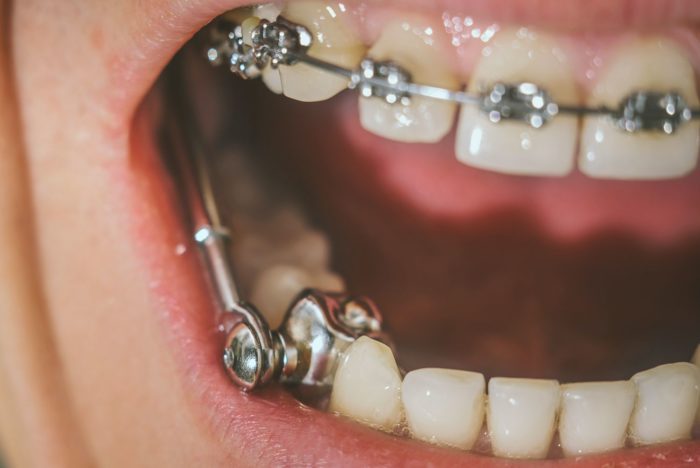
The main purpose of upper appliance braces is to correct a narrow upper jaw or a crossbite. A narrow upper jaw can lead to various dental and orthodontic issues, such as crowding of teeth, impacted teeth, and an improper bite. By widening the upper jaw, upper appliance braces create more space for the teeth to align properly and improve the overall bite.
How Do Upper Appliance Braces Work?
Upper appliance braces work by applying gentle and gradual pressure on the upper jaw, causing it to expand over time. The device is attached to the upper molars using bands or brackets, and a key or screw mechanism is used to activate the expansion. By turning the key or screw, the upper appliance braces gradually widen the upper jaw, allowing the bone and soft tissues to adapt to the new position.
Who Can Benefit from Upper Appliance Braces?
Upper appliance braces are commonly used in children and teenagers whose jaws are still growing. However, adults with a narrow upper jaw or a crossbite may also benefit from this orthodontic treatment. It is best to consult with an orthodontist to determine if upper appliance braces are the right option for your specific case.
Some signs that may indicate the need for upper appliance braces include crowded or crooked teeth, a narrow upper arch, difficulty breathing through the nose, and a crossbite. An orthodontic evaluation will help determine the underlying cause of these issues and whether upper appliance braces are necessary.
Conclusion
Upper appliance braces are a valuable orthodontic treatment option for correcting a narrow upper jaw or a crossbite. By widening the upper jaw, they create more space for the teeth to align properly and improve the overall bite. Whether you are a child, teenager, or adult, if you are experiencing dental or orthodontic issues related to a narrow upper jaw, it is worth considering upper appliance braces as a potential solution. Consult with an orthodontist to determine the best course of treatment for your individual needs.
Benefits of Upper Appliance Braces
1. Corrects Crossbite
One of the main benefits of upper appliance braces is their ability to correct crossbite. Crossbite occurs when the upper teeth sit inside the lower teeth when the mouth is closed. This misalignment can lead to uneven wear on the teeth, jaw discomfort, and difficulty in chewing. Upper appliance braces gradually widen the upper jaw, aligning the teeth properly and improving the bite.
2. Improves Breathing and Speech
By expanding the upper jaw, upper appliance braces can also help improve breathing and speech. A narrow upper jaw can cause breathing difficulties, especially during sleep, and can contribute to snoring and sleep apnea. Additionally, a narrow jaw can affect speech clarity. By widening the upper jaw, upper appliance braces can alleviate these issues and improve overall respiratory function and speech quality.
3. Creates Space for Crowded Teeth
Crowded teeth occur when there is not enough space in the mouth for all the teeth to properly align. This can lead to overlapping, crooked, or rotated teeth. Upper appliance braces create additional space in the upper jaw, allowing the teeth to shift into their correct positions. This not only improves the appearance of the smile but also makes oral hygiene easier, reducing the risk of tooth decay and gum disease.
4. Prevents the Need for Extractions
In some cases, upper appliance braces can prevent the need for tooth extractions. By expanding the upper jaw, these braces create sufficient space for all the teeth to fit properly. This can eliminate the need for removing healthy teeth to make room for the crowded ones. Avoiding extractions not only preserves the natural teeth but also reduces the overall treatment time and cost.
5. Enhances Facial Symmetry
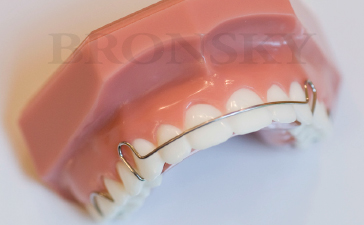
The upper jaw plays a significant role in facial symmetry. A narrow upper jaw can cause the face to appear imbalanced or asymmetrical. By widening the upper jaw, upper appliance braces can help improve facial harmony and balance. This can have a positive impact on a person’s overall appearance and self-confidence.
Overall, upper appliance braces offer numerous benefits, including correcting crossbite, improving breathing and speech, creating space for crowded teeth, preventing extractions, and enhancing facial symmetry. If you are considering orthodontic treatment, consult with your orthodontist to determine if upper appliance braces are the right option for you.
How Do Upper Appliance Braces Work?
The process of using upper appliance braces typically begins with a consultation with an orthodontist. The orthodontist will assess the patient’s dental condition and determine if upper appliance braces are the right treatment option. If so, the orthodontist will take impressions of the patient’s teeth and create a customized upper appliance brace.
Once the upper appliance brace is ready, it is attached to the upper teeth using bands or brackets. The brace may also include a screw or a key that can be turned to apply pressure to the upper jaw. The patient will be instructed on how to turn the screw or key at regular intervals to gradually widen the jaw.
Overall, upper appliance braces are an effective treatment option for correcting dental issues related to the upper jaw. They provide a non-surgical solution for widening the jaw and improving the alignment of the teeth. With proper care and compliance with the orthodontist’s instructions, patients can achieve a more harmonious and functional bite.
Who Can Benefit from Upper Appliance Braces?
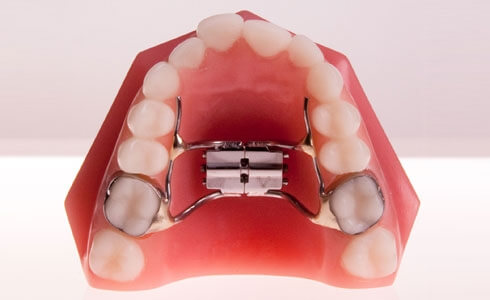
1. Individuals with Upper Jaw Misalignment
One group of people who can benefit from upper appliance braces are those with upper jaw misalignment. This can occur due to genetics, trauma, or other factors. Upper appliance braces can help to correct the alignment of the upper jaw, improving both the function and appearance of the teeth and jaw.
2. Individuals with Crossbites
Crossbites occur when the upper teeth sit inside the lower teeth when the mouth is closed. This can cause discomfort, difficulty chewing, and uneven wear on the teeth. Upper appliance braces can help to correct crossbites, bringing the teeth into proper alignment and improving overall oral health.
3. Individuals with Overbites
An overbite is when the upper front teeth overlap significantly with the lower front teeth. This can lead to problems with speech, eating, and self-esteem. Upper appliance braces can help to correct overbites, aligning the teeth and improving both function and appearance.
4. Individuals with Crowding or Spacing Issues
Upper appliance braces can also benefit individuals with crowding or spacing issues in the upper jaw. Crowded or spaced teeth can be difficult to clean properly, leading to an increased risk of tooth decay and gum disease. Upper appliance braces can help to align the teeth, creating a more even and healthy smile.
Choosing the Right Upper Appliance Braces
1. Consultation with an Orthodontist
2. Types of Upper Appliance Braces
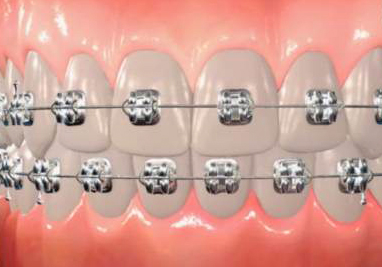
There are different types of upper appliance braces available, including traditional metal braces, ceramic braces, and clear aligners. Each type has its advantages and disadvantages, so it’s essential to understand the differences before making a decision.
- Traditional Metal Braces: These are the most common type of braces and are made of metal brackets and wires. They are highly effective but can be more noticeable than other options.
- Ceramic Braces: Ceramic braces are similar to traditional metal braces but use tooth-colored or clear brackets, making them less noticeable. However, they may be more prone to staining and require extra care.
- Clear Aligners: Clear aligners, such as Invisalign, are a popular choice for those who want a more discreet option. They are removable and virtually invisible, but may not be suitable for severe misalignment cases.
3. Cost and Insurance Coverage

The cost of upper appliance braces can vary depending on the type of braces and the complexity of the treatment. It’s essential to consider your budget and check if your dental insurance covers orthodontic treatment. Many insurance plans provide coverage for braces, but the extent of coverage may vary.
4. Maintenance and Lifestyle
Another factor to consider when choosing upper appliance braces is the maintenance and lifestyle requirements. Traditional metal braces may require more frequent adjustments and can restrict certain foods. Clear aligners, on the other hand, are removable, allowing for easier oral hygiene and the ability to eat without restrictions.
5. Treatment Duration
The duration of treatment is another important consideration. Traditional metal braces usually require a longer treatment time compared to clear aligners. The orthodontist will provide an estimate of how long the treatment will take based on your specific case.

Dr. Fidel Cann: Esteemed orthodontist with a lifelong dedication to enhancing smiles and oral health. Pioneering expertise, compassionate care.
